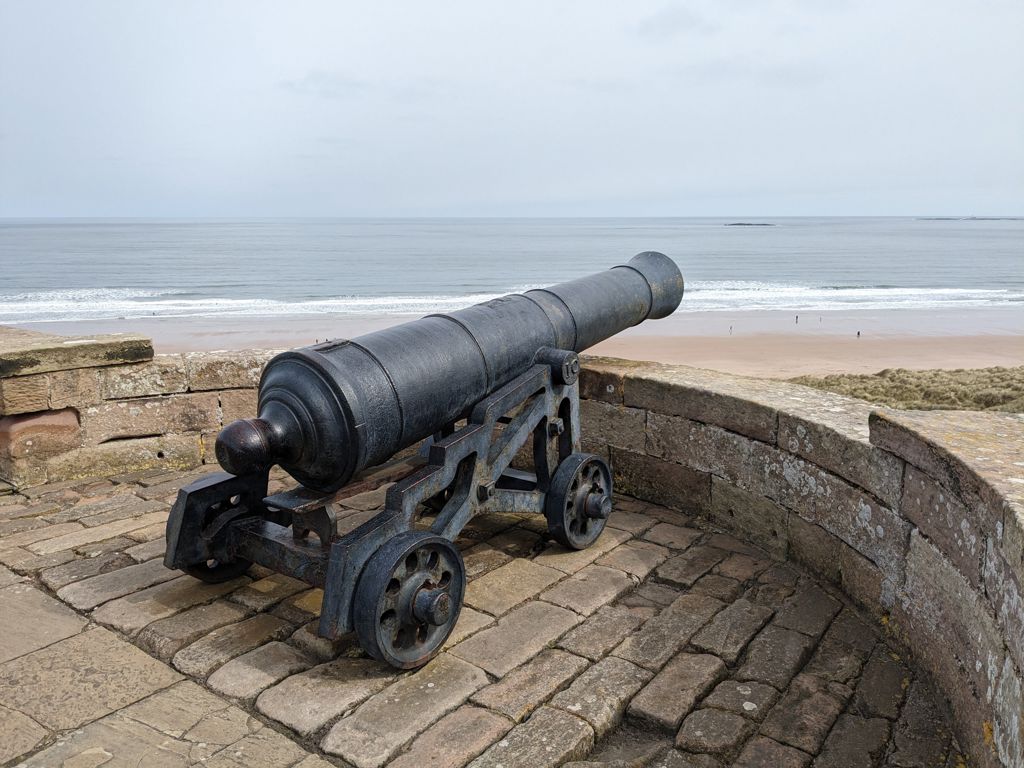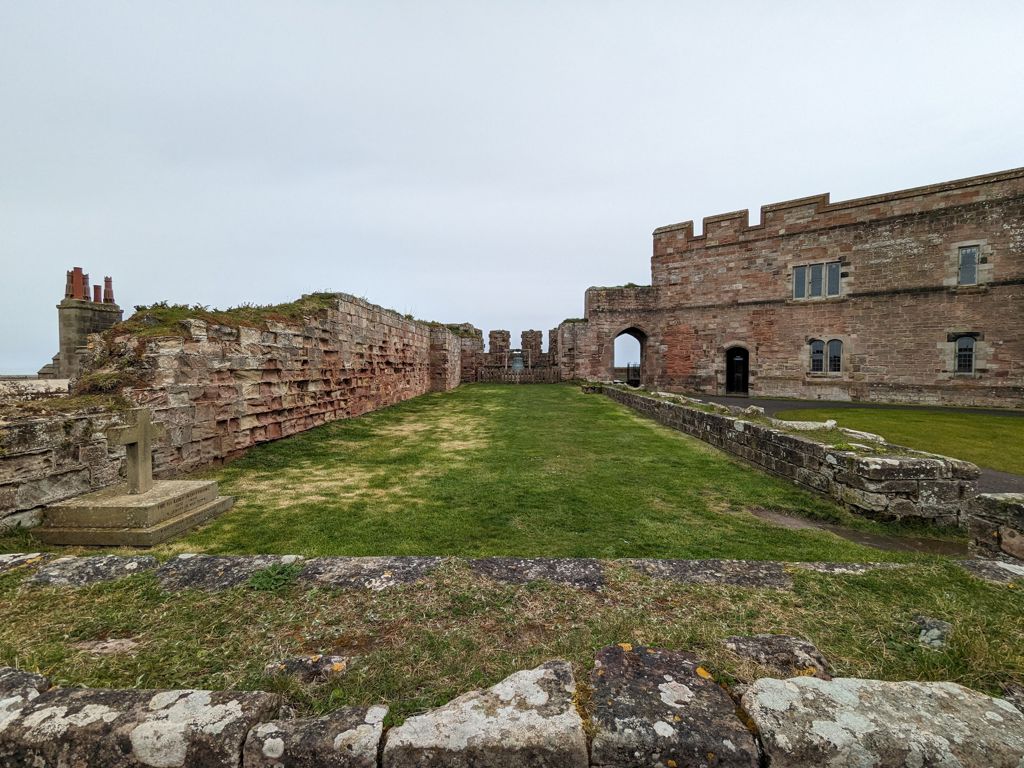Bamburgh Castle

Bamburgh Castle, nestled beside the sea in the picturesque landscape of Northumberland, England, stands proudly atop a towering basalt crag, reaching a height of 150 feet (46 metres). While the current stone structure dates back to the 11th century, the site's significance traces back to ancient times.
Over the centuries, Bamburgh Castle has played host to a diverse array of occupants, ranging from kings and lords to inventors and saints. The castle has seen its fair share of warfare and bloodshed, in fact Bamburgh is the first castle to be destroyed by gunfire. Beyond its historical significance, Bamburgh Castle is shrouded in myth and mystery, with tales of ghosts and otherworldly occurrences adding an air of intrigue to its already captivating narrative.
Click here to watch our video exploring Bamburgh Castle and discover its history.
- Region
- North East, England
- Period
- 12th Century
- Type
- Norman Castle
- Condition
- Intact
- Ownership
- Private
- Access
- Public - Admission Charge
Early History
The historical roots of Bamburgh extend far beyond the medieval era, with evidence suggesting human activity in the area dating back to the Mesolithic period. However, the first recorded evidence of settlement in Bamburgh appears in the Anglo-Saxon Chronicle in the year 547. According to this chronicle, King Ida of Bernicia, an Anglian ruler, commissioned the construction of a fort at Bamburgh.
This fort, while not resembling the stone castles of later centuries, served as a fortified settlement, known as a burgh. Initially constructed from timber, the fort was enclosed by a protective hedge. Over time, this rudimentary defence was strengthened, evolving into a formidable wall that encircled the burgeoning settlement.
Ida’s grandson, Æthelfrith, united the neighbouring kingdom of Deira with Bernicia and is attributed to creating the kingdom of Northumbria, the largest of the seven kingdoms of England at the time. It is also believed that the name Bamburgh derives from Æthelfrith’s wife, Beba, whom he gave the fort to and it became known as Beba’s Burgh which then evolved to Bebbanburg and finally to Bamburgh.
In the year 616, the pivotal Battle of the River Idle marked the demise of Æthelfrith, who fell to the forces of Edwin. Edwin, later revered as Saint Edwin, sought to reclaim his father's kingdom of Deira, which Æthelfrith had seized control of. Æthelfrith’s sons, Oswald and Oswiu fled into exile upon their father’s death and were educated and baptised by the Irish monks of Iona.
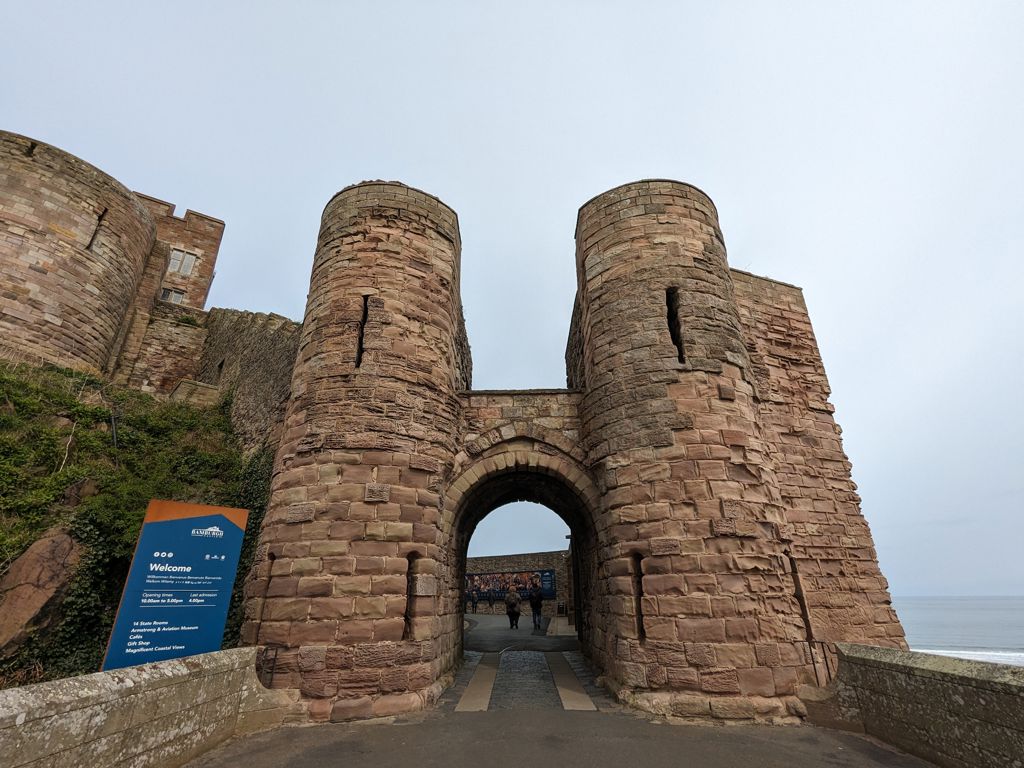
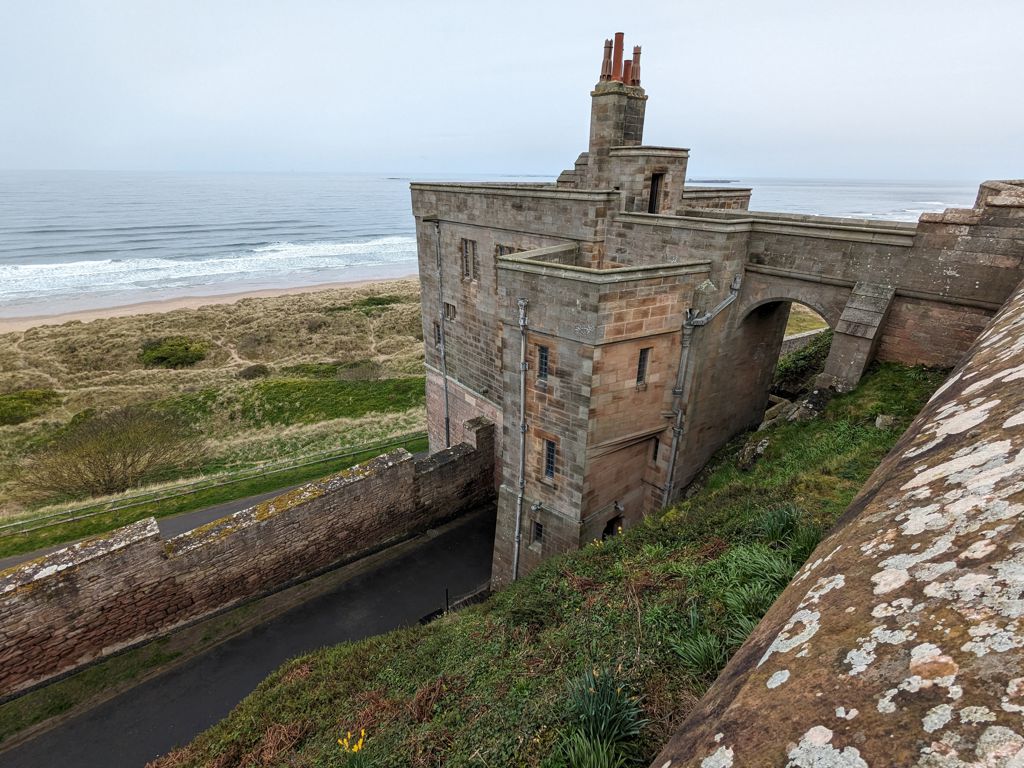
St Oswald
Following the death of Edwin in 633, who fell in defeat at the Battle of Hatfield Chase against King Caedwalla, Oswald emerged from exile to reclaim his rightful place. With resolve and determination, Oswald rallied his forces and prepared to confront Caedwalla in battle. Legend has it that on the eve of the decisive encounter, Oswald received a divine vision - a visitation from Saint Columba, who bestowed upon him words of support and encouragement.
Empowered by this divine intervention, Oswald led his forces into the fray, facing off against Caedwalla and the formidable King Penda at the Battle of Heavenfield. Despite being outnumbered by Caedwalla's superior forces.
Following his victory, Oswald sent for the Irish monk Aiden to help spread the word of Christianity. Oswald granted Aiden the Island of Lindisfarne to build a monastery which was very successful in its mission. Oswald was also noted for his devoutness and charity, on one occasion, upon learning of a group of beggars at the gate he took a silver dish of meat and offered it to them. Aiden blessed Oswald’s arm, praying that the arm that did such an act should never decay.
After his defeat in 1634, King Penda gradually regained support and allies in the ensuing years, culminating in a formidable campaign against Oswald by the 1640s. In 1642, at the Battle of Maserfield in Oswestry, Penda's forces clashed with those of Oswald once more. In a tragic turn of events, Penda emerged victorious, and Oswald met his demise on the battlefield, his body subjected to dismemberment at the hands of his foes.
Yet, in the wake of Oswald's untimely death, tales of miraculous occurrences began to circulate, centred around the spot where he fell and the fragments of his reclaimed body, ultimately leading to his canonization as a saint.
In 793 trouble loomed, the Vikings arrived in England and Lindisfarne was the casualty of one of the earliest Viking raids which involved most of the monks being slaughtered and countless precious treasures plundered. This was just the beginning of almost three centuries of Viking raids and invasion. In 993 the Viking led a vicious attack on Bamburgh, practically destroying the fort completely, the kingdom of Northumbria was in ruins and what was left of Bamburgh fell into disrepair.
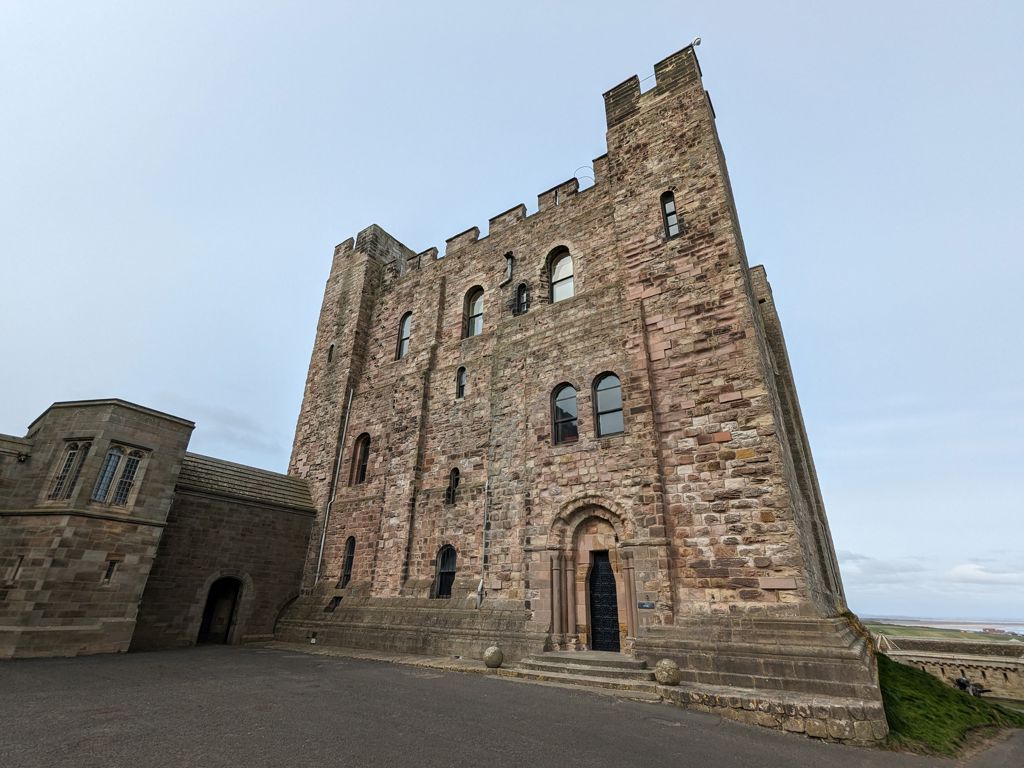
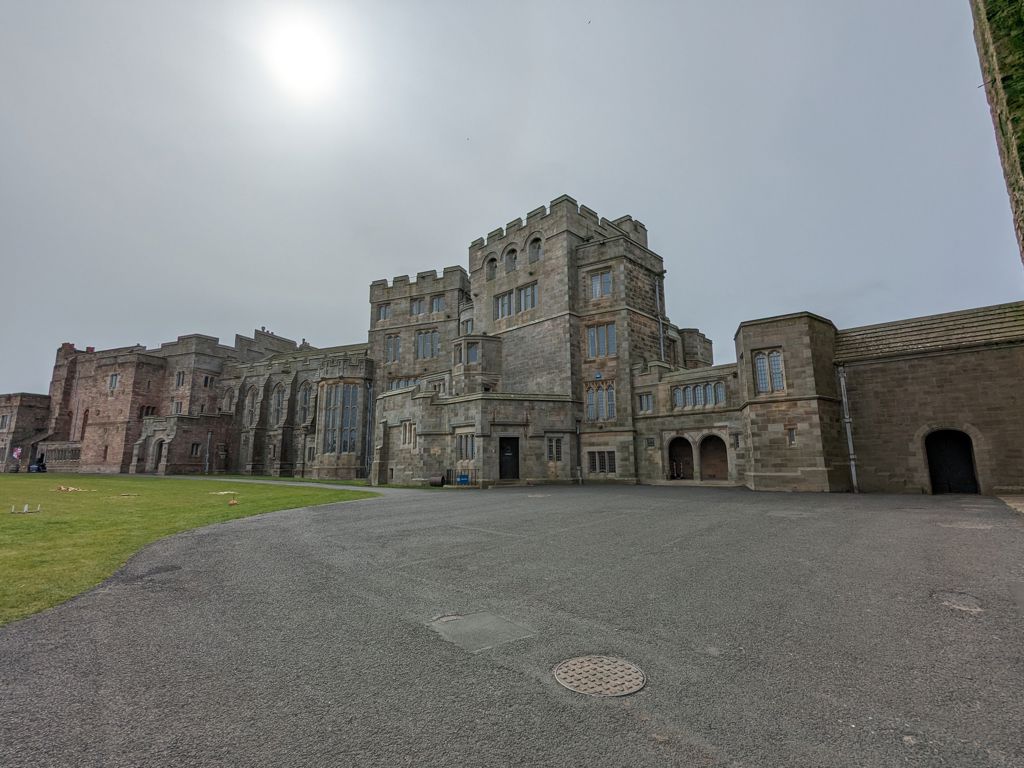
Normans
In 1066 William the conqueror arrived from Normandy and following his victory at the Battle of Hastings he was crowned King of England. Recognising the strategic importance of Northumbria as a buffer against Scottish incursions into the rest of England, William adopted a policy of allowing the Earls of Bamburgh to maintain a degree of autonomy. This leniency was reflected in the absence of entries pertaining to Northumbria in the Domesday Book, a comprehensive survey of landholdings and resources commissioned by William.
However after Earl Waltheof joined a failed rebellion against the king he took matters into his own hands, sending his army marching north creating devastation.
However, when Earl Waltheof, a prominent nobleman, allied himself with a failed rebellion against the king, William swiftly took action to assert his authority. William dispatched an army northward, unleashing devastation in its wake.
Amidst the backdrop of ongoing tensions and frequent skirmishes with the Scots, Bamburgh became an important border garrison, safeguarding England's northern frontier and efforts were undertaken to fortify and strengthen its defences.
In the year 1095, the English crown passed to King William II, son of William the Conqueror, at a time when Bamburgh Castle was under the control of Earl Robert de Mowray. However, Earl Robert's decision to align himself with a rebellion against King William II proved to be a grave error, William was furious and laid siege to Bamburgh Castle.
In the face of overwhelming odds, Earl Robert fled, leaving his wife to bear the burden of defending Bamburgh Castle against the king's forces. Earl Robert was subsequently captured and brought back to Bamburgh, where King William II, enraged by the betrayal, threatened to gouge out his eyes unless the castle was surrendered. Faced with the grim prospect, Earl Robert's wife relented, surrendering Bamburgh Castle to the crown.
During the reign of King Henry II around 1164, the iconic great keep that continues to command the skyline of Bamburgh Castle today was constructed. Over the centuries, Bamburgh Castle evolved into much more than a mere fortress, serving as a prestigious royal palace for a succession of illustrious medieval monarchs. Among these notable figures were King John, Edward I, II, and III, and Henry III. Henry III, in particular, is credited with enhancing the castle's grandeur by overseeing the construction of the magnificent great hall and implementing improvements to make the castle more hospitable,
In addition to its role as a regal residence, Bamburgh Castle also served as a prison, following the English victory over the Scots at the Battle of Neville’s Cross in 1346, the Scottish King David II was imprisoned at Bamburgh.
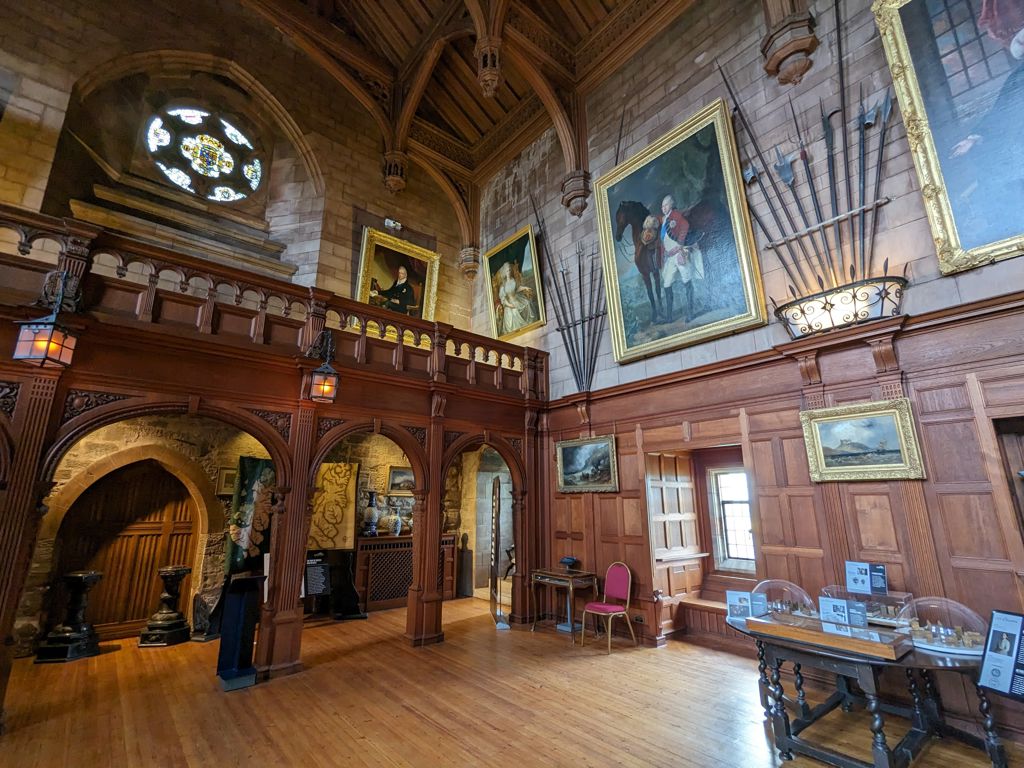
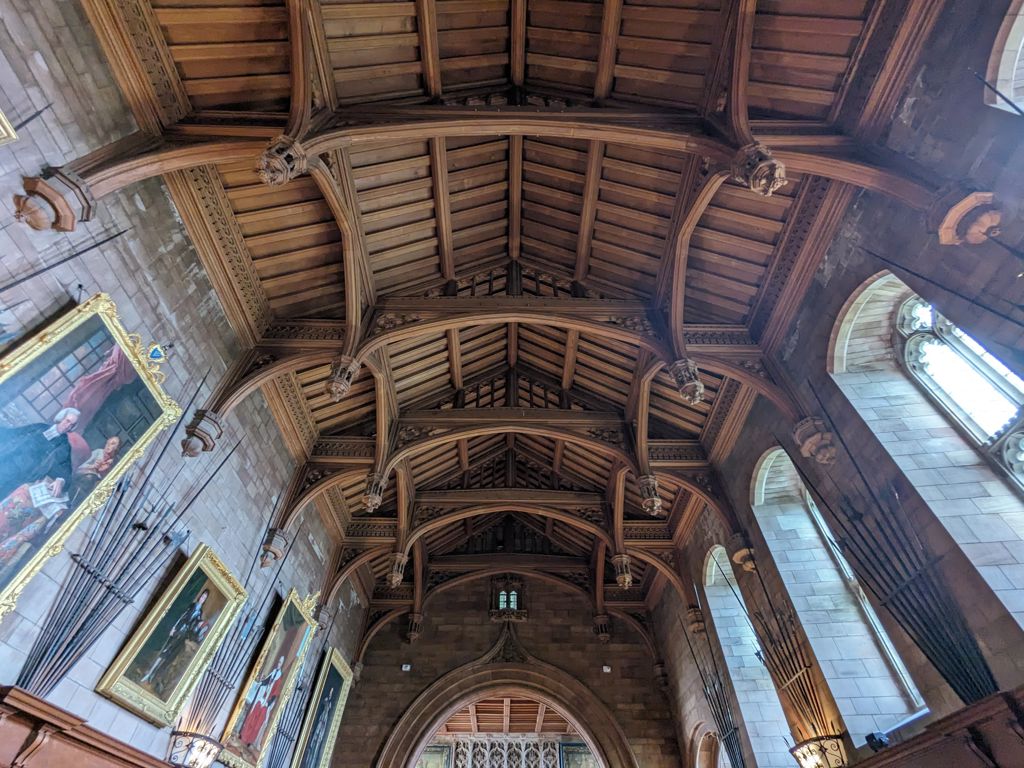
War of The Roses
Amidst the turbulent conflict of the Wars of the Roses, a bitter struggle for the English throne between the rival factions of the Royal Houses of Lancaster and York, which began in 1455 and lasted until 1487. Bamburgh Castle, along with the nearby Dunstanburgh and Alnwick were held for the Lancastrian King Henry VI.
Following Henry’s defeat at the Battle of Hexham in 1464, he fled to Bamburgh Castle and utilised the castle as his base. The Yorkist army were hot on his tail and arrived at the castle shortly afterwards, but not before Henry had managed to flee once more. The Lancastrian forces were led by the Earl of Warwick, Richard Neville, commonly referred to as “The Kingmaker”, Richard issued a stark ultimatum to the castle's garrison, if they surrendered all would be spared but the garrison’s leader, Sir Ralph Grey, but if they refused then a man would hang for every cannon ball fired.
Unsurprisingly, Ralph refused the terms and a siege commenced, day and night for weeks cannons fired relentlessly on the castle. Amidst the chaos of battle, Sir Ralph Grey was struck unconscious by falling debris and the garrison quickly took this opportunity to surrender. Although the original terms had been breached, Richard spared the garrison but Ralph was executed.
The devastation wrought by the relentless cannon fire during the siege had practically destroyed the castle and it was deemed impractical to repair it, thus earning Bamburgh Castle holds the dubious distinction of being the first castle to have been laid to ruin by the devastating power of cannon fire.
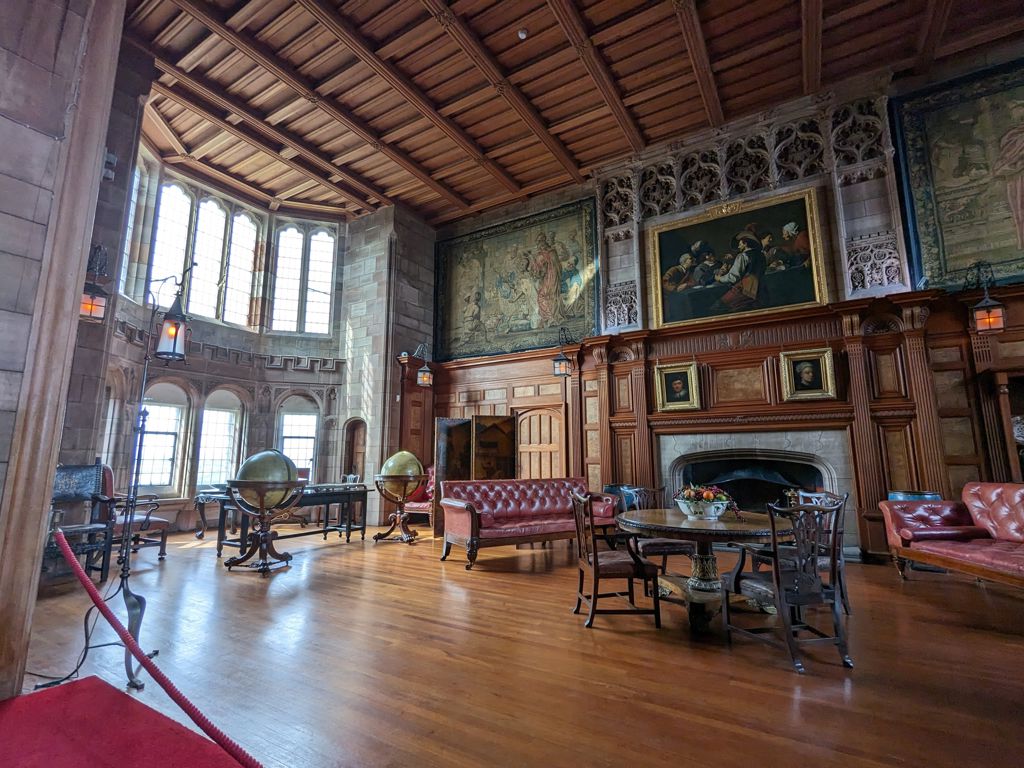
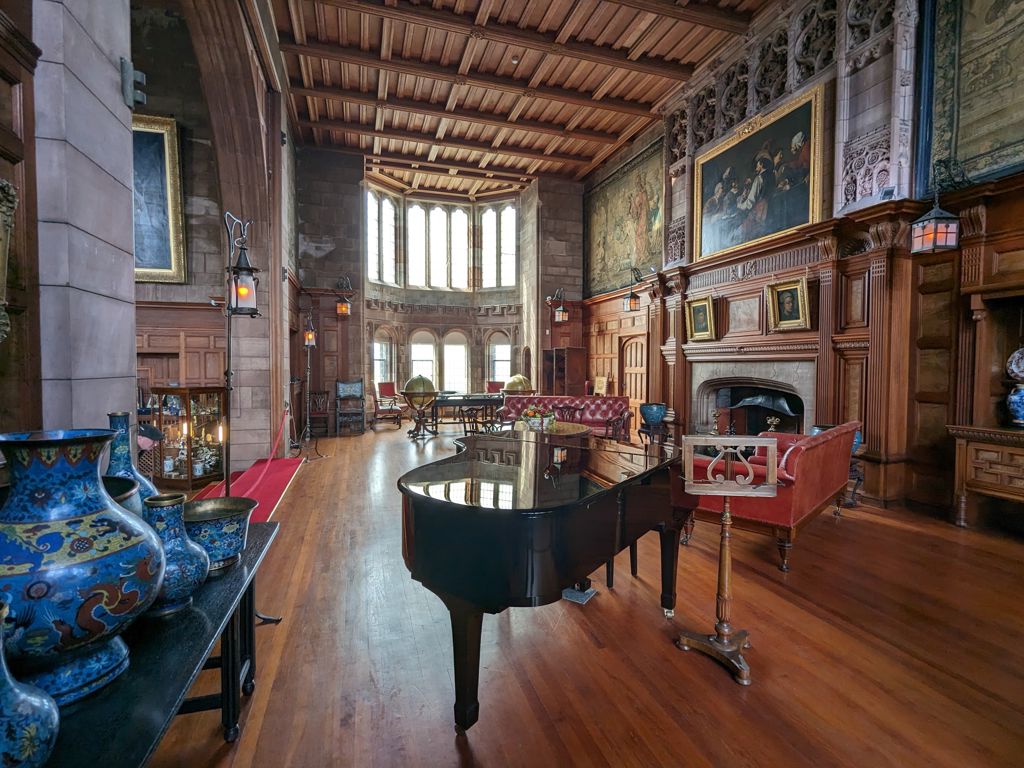
A New Purpose
Bamburgh Castle, although having no military or other purpose remained property of the crown until 1600, when James I gifted it to Claudius Foster, son of the castle's previous warden. This could be conceived as a wonderful present, but the reason James I had passed it on is because it had become an expensive liability to retain. Claudius soon discovered this as it practically bankrupted his family.
The castle was inherited by Dorothy, who married Lord Nathaniel Crewe in 1701. Crewe was extremely wealthy but 40 years Dorothy's senior, however the match was a happy one. When Dorothy passed away in 1716, Crewe was beside himself with grief and set about renovating the castle in his wife's memory.
Crewe died without an heir in 1722 but had in his will set terms for his fortune to be distributed amongst local charities under a trust headed by Dr Sharp. Extensive repairs on Bamburgh’s keep were completed and parts of the buildings were converted into a school, doctors surgery and pharmacy for the local community as well as food being distributed to the poor and the windmill available for them to grind their corn.
Sharp's groundbreaking maritime efforts in establishing an early coastguard system transformed Bamburgh into a hub of remarkable and forward-thinking achievements. Dr. Sharp's achievements included the historic launch of the first lifeboat from Bamburgh Castle's coastline in 1786.
Eventually the trust’s funds ran out and they were forced to sell the castle in 1894. It was sold for £60,000 to the Industrialist and Inventor William Armstrong. Armstrong was an early champion for renewable energy and his manor at Cragside was the first in the world with lighting powered entirely by hydroelectricity.
Armstrong continued the restoration program for Bamburgh, investing over £1,000,000 to see it brought back to glory. Unfortunately he died in 1900 before the project was completed but his family continued his plan and under his great nephew, Bamburgh was refurbished into a family home where the Armstrong family reside to this day. The Castle and grounds are also open for the public to visit and enjoy.
Ghosts & Legends
The Legend Of The Laidly Worm
There is an ancient tale at Bamburgh of a fearsome serpent, or dragon, that cast a shadow of terror across the land. Yet, this purported malevolent beast was no sinister creature at all, but rather a princess, the daughter of a Northumbrian king, ensnared in the clutches of a vile curse cast upon her by her wicked stepmother. Transformed into the monstrous Laidly Worm, the princess's true nature lay concealed beneath a guise of dread.
Upon hearing of these ominous tales, the princess's valiant brother, Childewynd, resolved to confront the creature and bring an end to its reign of terror. However, upon facing the serpent, he found it unwilling to engage in combat. As the serpent spoke, Childewynd's realisation dawned—he beheld not a foul beast, but his own sister. With swift determination, Childewynd embarked on the task of lifting the curse, understanding that salvation lay in the power of three kisses and restoring the princess to her true form.
Filled with a resolve to seek retribution against his wicked stepmother, Childewynd returned to the castle and using the sprig of a rowan tree he enacted his vengeance, casting a potent spell upon her that transformed her into a hideous toad. Condemned to dwell in the darkness beneath the castle in a desolate cave, she was forever banished from the realm of light.
Legend further recounts that the cursed toad could emerge from its subterranean prison once every seven years. However, the curse could only be broken through a ritual of threefold action: the unsheathing of Childewynd's sword thrice, followed by the blowing of his horn in a triple call, culminating in the tender touch of a kiss upon the toad's wretched form. Yet, despite the passage of time, none thus far have succeeded in lifting the curse and bringing an end to the toad's torment.
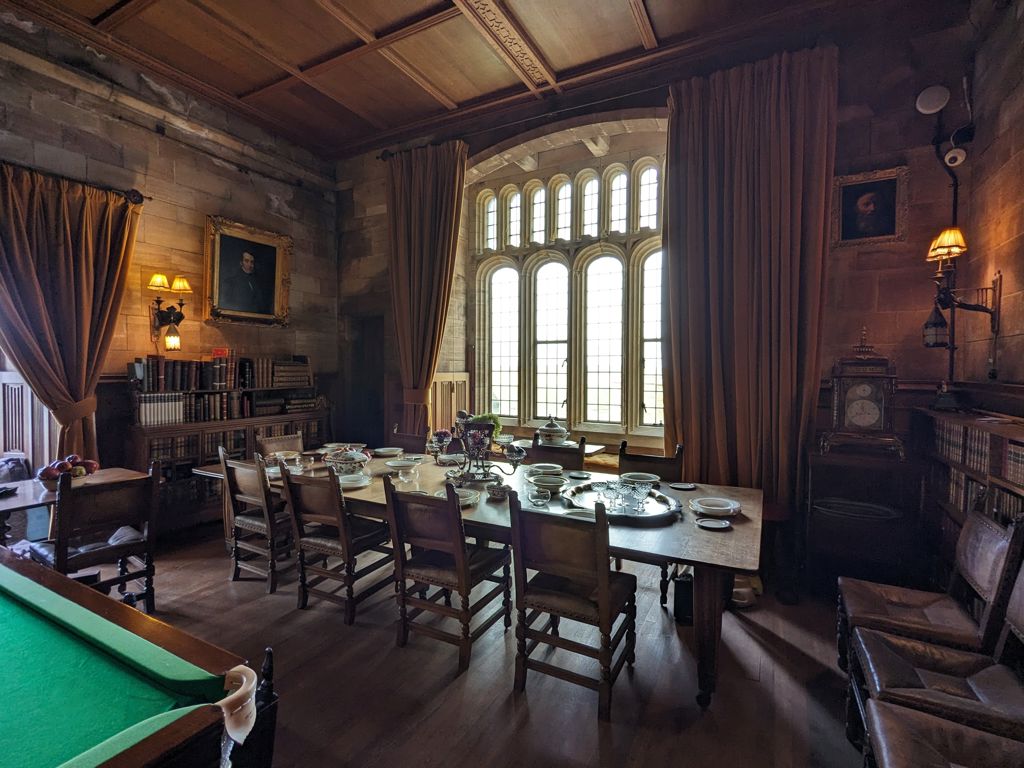
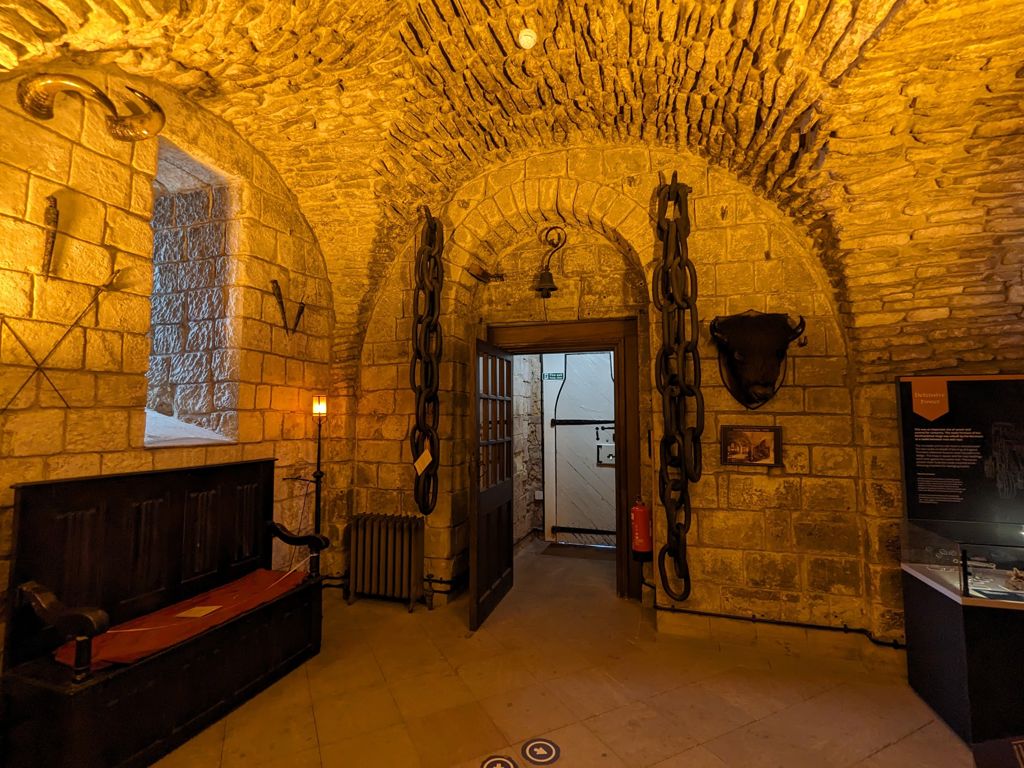
Green Jane
Numerous sightings have been reported of the ghost of Jane, a young girl from the village, who is often spotted descending the steps from a gate, draped in a green cloak and carrying a bundle. It is said that Jane frequently visited the castle with her infant in tow to beg for food.
Tragically, on one ill-fated occasion, Jane was met with harsh treatment by the castle guards, who cruelly turned her away. In the throes of her distress, she stumbled and met her demise, tumbling down the unforgiving stone steps to her tragic end. Witnesses to this spectral occurrence have recounted hearing callous laughter echoing through the air, further adding to the sorrowful and haunting legend of Jane's untimely demise
Divine Intervention
In the year 633, Oswald, who would later be recognized as Saint Oswald, returned from exile to reclaim his ancestral lands as the son of the defeated Northumbrian King Æthelfrith. Legend has it that the night prior to the decisive battle, Oswald experienced a vision of Saint Columba, who offered him divine support and encouragement. Despite facing superior forces led by Cadwalla, Oswald emerged victorious.
In the aftermath of his triumph, Oswald summoned the Irish monk Aiden, destined to be known as Saint Aiden, to help spread the word of Christianity. He generously granted the Island of Lindisfarne for the establishment of a monastery.
On one occasion, as a group of beggars gathered at the gates, Oswald responded with compassion, offering them food and a silver dish, which he divided into pieces to share. Witnessing this act of kindness, Aiden was deeply moved. He blessed Oswald's hand, declaring, "The arm that performed such a deed shall never decay."
Tragically, in 642, Oswald met his demise in battle, his body subsequently dismembered. His hand was taken to Bamburgh church and placed in a silver case. It was later stolen in the 11th century, despite the passage of centuries the hand was uncorrupted.
Another tale of Saint Aidan unfolds in Bamburgh. In the year 651, the village found itself engulfed in flames ignited by Penda, the pagan king of Mercia. From his vantage point on the neighbouring Farne Islands, Saint Aidan witnessed the inferno and offered heartfelt prayers.
In a remarkable response to the Aiden’s prayers, the wind shifted its course, causing the flames to surge back upon the besiegers, who hastily retreated in fear of the unexpected reversal of fortune.
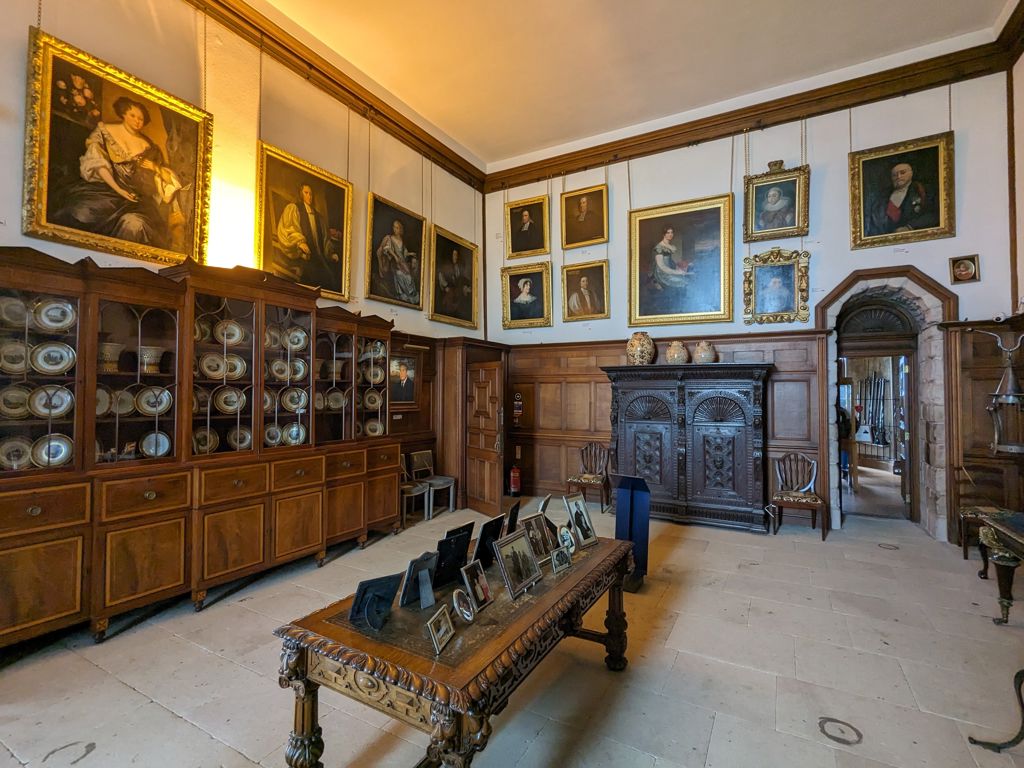
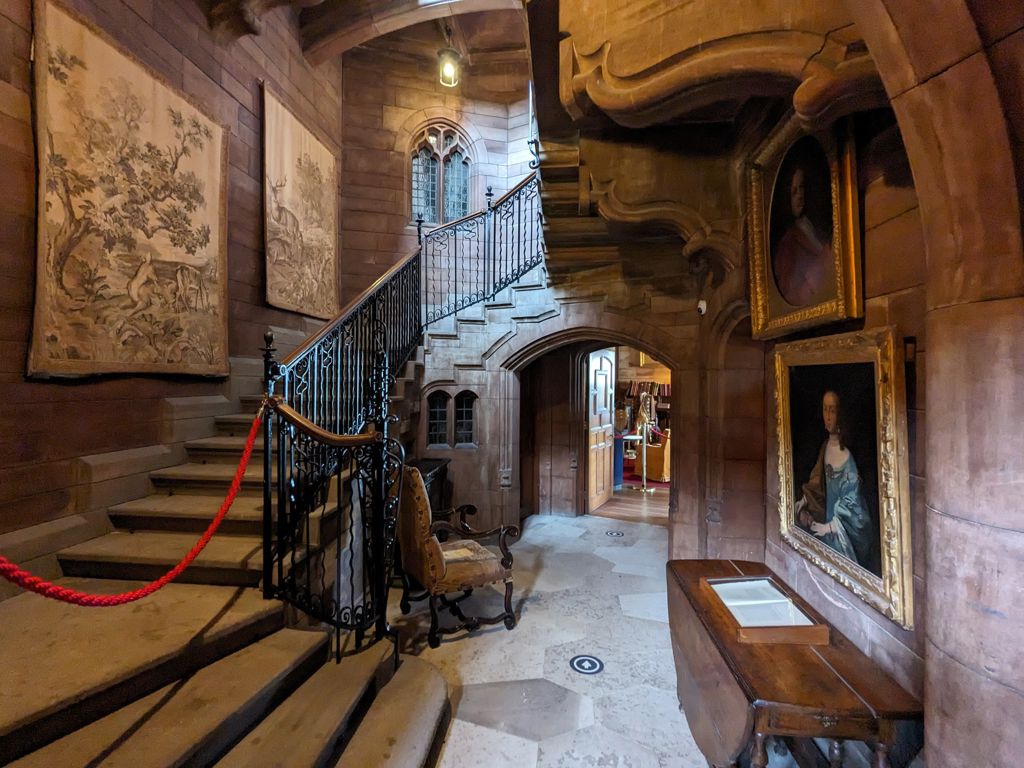
Pink Lady
Long ago, a royal princess fell deeply in love with a knight whose suitability failed to meet her father's standards. She pleaded with her father to let her marry him and he eventually relented, albeit with a stringent condition: the knight must embark on a journey overseas, and only upon his return after seven years could they marry. Thus, with hope in their hearts, the lovers awaited the knight's triumphant return, eager to prove the enduring strength of their devotion.
As the years slipped by, the king harboured hopes that his daughter's affections would wane with time. Yet, to his dismay, her love for the knight only deepened. Desperate for his daughter to forget the knight, the king concocted a tale, informing her that the knight had wed another in a distant land and would never return. To lift her spirits, he presented her with a splendid gown in her beloved shade of pink, hoping its splendour would ease her sorrow.
In the depths of her despair, the princess adorned herself in the magnificent pink dress gifted by her father before she ascended to the top of the castle's tallest tower. With a heavy heart, she cast herself into the abyss below, consumed by the anguish of unrequited love. Tragically, shortly after her untimely demise, the knight, having completed his years of absence, returned with eager anticipation of reuniting with his beloved. Devastated by the cruel twist of fate, he arrived too late, unaware of the tragic fate that had befallen his cherished princess.
Legend has it that once every seven years, the princesses ghostly figure wearing her pink dress can be seen wandering through the corridors, she roams until she reaches the path leading to the beach. There, she stands solemnly, gazing out across the vast expanse of the sea still waiting for her love to return.
King Arthur
Bamburgh Castle holds the intriguing distinction of being associated with Joyous Gard, the fabled stronghold from Arthurian lore. According to legend, it was here that the renowned knight Lancelot single-handedly captured the castle and dispelled its malevolent enchantment.
Subsequently, Joyous Gard became a sanctuary for Lancelot, where he sought refuge alongside Queen Guinevere following their infamous affair that led to their downfall. When King Arthur uncovered their treachery, he condemned Guinevere to death, prompting Lancelot to intervene and rescue her from her dire fate. Despite Arthur and Gawain's attempts to besiege the castle in a bid to reclaim Guinevere, their efforts were in vain. Eventually, Lancelot relinquished Joyous Gard, opting for a life of exile in its aftermath.
Upon Lancelot's death, his body was returned to Joyous Gard and buried, only to suffer the indignity of desecration in later years, as his tomb was unearthed and his remains destroyed. Thus, the storied legacy of Joyous Gard intertwines with the intricate tapestry of Arthurian legend, the enduring allure and enduring mysteries of the Arthurian mythos.
Further Tales
According to folklore, fortunate individuals possess the ability to discover money left behind by the fairies. However, a crucial condition accompanies this stroke of luck: those who stumble upon such fairy treasure must ensure to contribute a coin of their own to the hoard they've unearthed. Failure to do so would result in the gradual slipping away of the entire fortune, as if it were never there to begin with.
Regular sightings of the ghost of Dr. John Sharp, who dedicated himself to the restoration of the castle in the 18th century, have been reported. Legend has it that even after his passing, Dr. Sharp continues to watch over and care for the castle.
